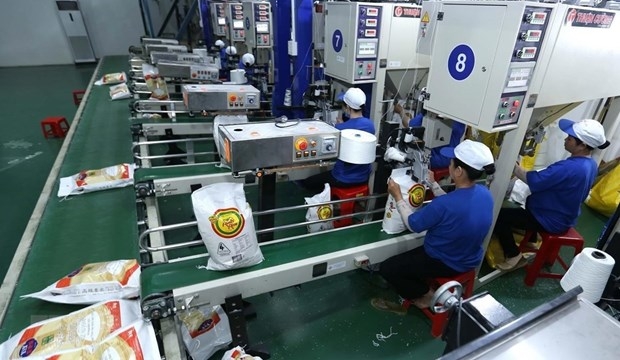Agricultural restructuring policy contributes to rise in Vietnam's rice prices: report
ABO/NDO- The Vietnamese government has issued an agricultural restructuring policy, by which the rice structure has been strongly adjusted, changing the rice cultivation protocols and paying more attention to improving rice quality rather than increasing production, according to a report by Research and Markets - the world's largest market research store.
This is one of the reasons for the rise in Vietnam’s rice prices mentioned in the Research Report on Vietnam's Rice Industry 2022-2031.
The report cites statistics showing that in 2015, Vietnam’s quality rice seeds accounted for only 35%-40% of the total seeds, while in 2020 the chart reached 75%-80%, and even in some places, the usage rate of quality rice seeds is as high as 90%.
Secondly, the report says, Vietnam has signed many FTAs such as the Comprehensive and Progressive Agreement for Trans-Pacific Partnership (CPTPP) and the EU-Vietnam Free Trade Agreement (EVFTA), which creates conditions for a breakthrough in the country's rice exports.
 |
| In 2015, Vietnam’s quality rice seeds accounted for only 35%-40% of the total seeds, while in 2020 the chart reached 75%-80%, and even in some places, the usage rate of quality rice seeds is as high as 90%. (Photo: VNA). |
Another reason is that many industries were affected by the COVID-19 pandemic in 2020, but the market demand for food has not decreased.
According to experts, the Mekong Delta is the centre of rice cultivation in Vietnam, contributing half of rice production and up to 95% of the country’s rice exports.
The report says Vietnam’s rice exports are to continue to rise in both volume and value in 2022-2031.
Its rice export value reached 3.1 billion USD in 2021, and rice has become a bright spot in Vietnam’s agricultural products exports.
Last year, Vietnam’s total rice production was about 44 million tonnes, meeting the demand for domestic consumption, processing, poultry and livestock feed, and export.
Since the EVFTA came into force on August 1, 2020, rice exports have rapidly seen an upturn. Under the trade deal, the EU gives Vietnam a quota of 80,000 tonnes of rice with a zero-per-cent tax rate per year, including 30,000 tonnes of milled rice, 20,000 tonnes of unmilled rice and 30,000 tonnes of aromatic rice.
For rice from Vietnam, the EU will reduce the import duty rate to zero in the coming years. Taking advantage of the above, from September 2020, Vietnam started to sell rice to the EU at a much higher price than before.
(Source: NDO)
 về đầu trang
về đầu trang







